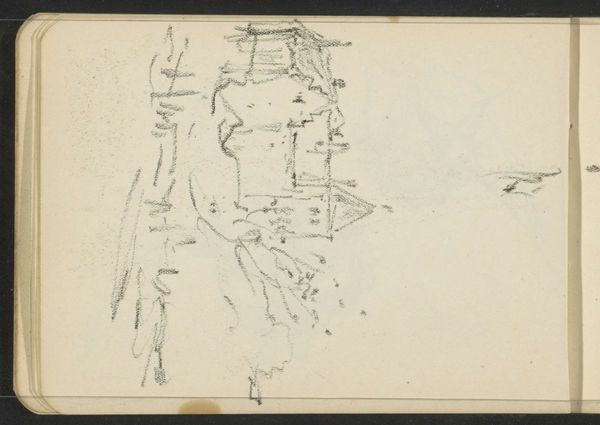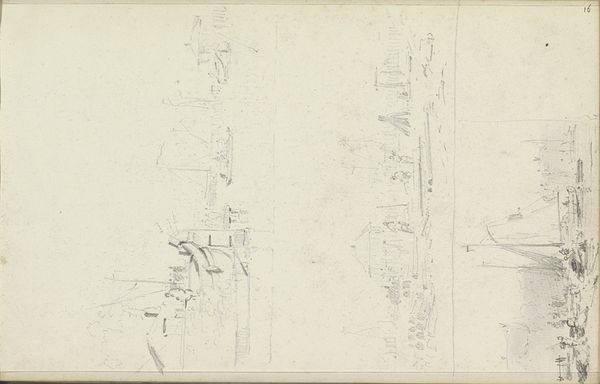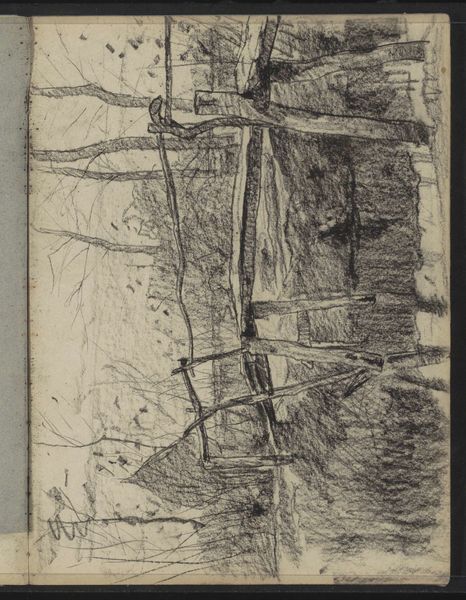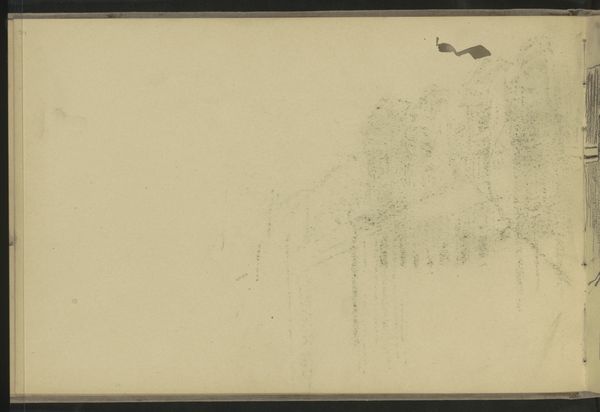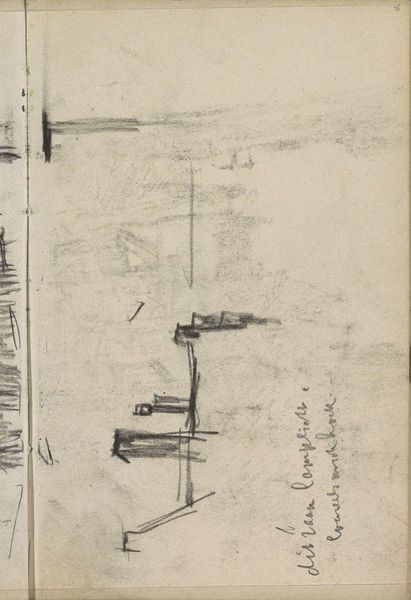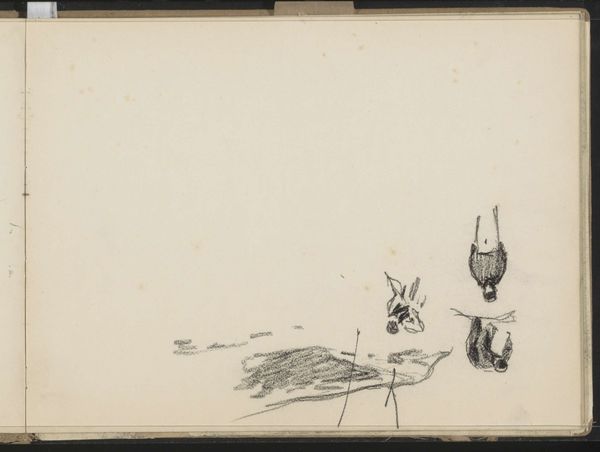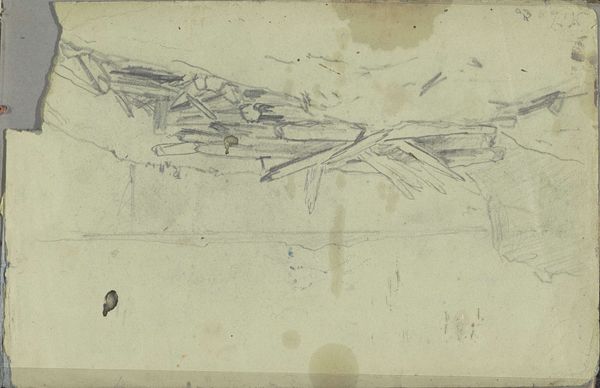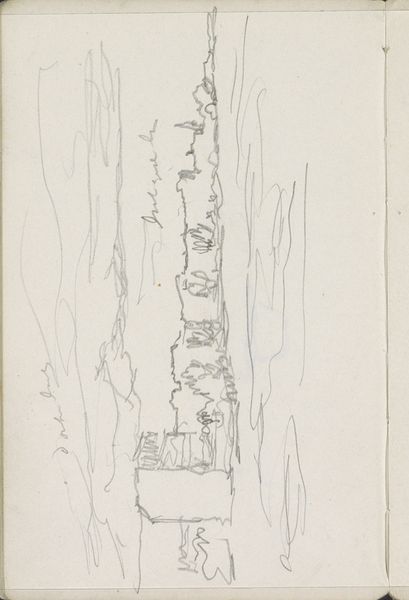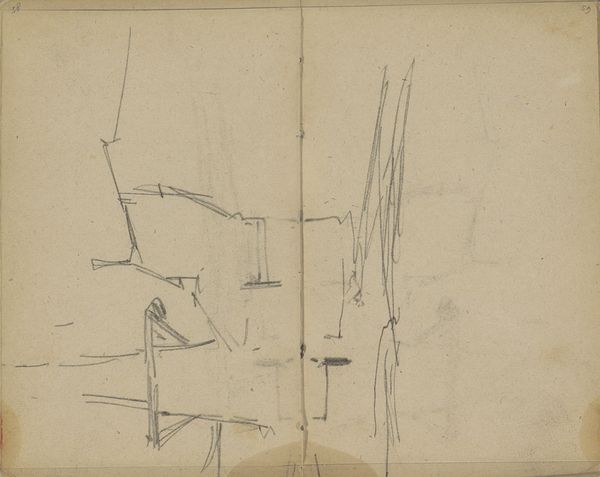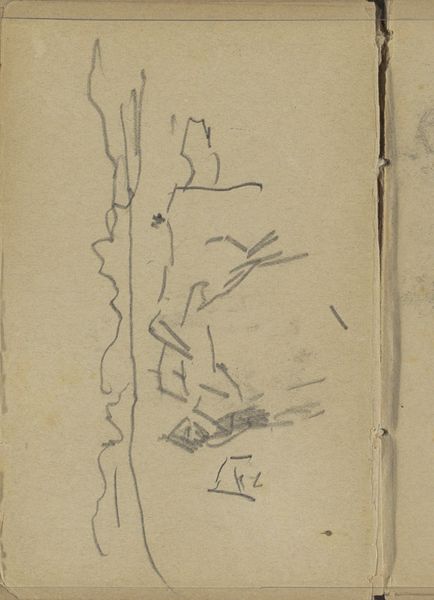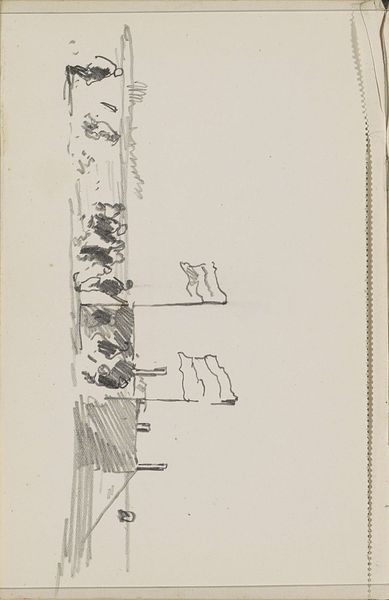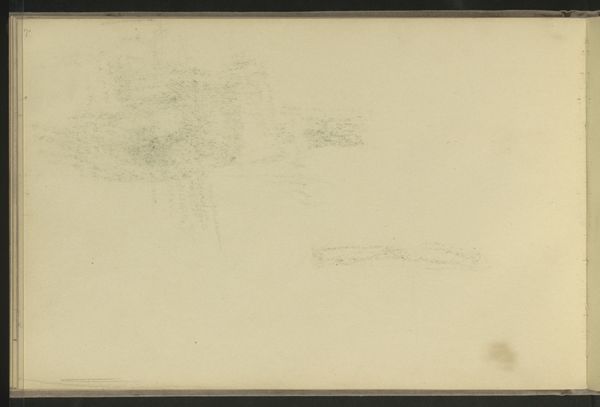
drawing, paper, pencil
#
drawing
#
dutch-golden-age
#
impressionism
#
landscape
#
paper
#
geometric
#
pencil
#
cityscape
Copyright: Rijks Museum: Open Domain
Editor: This is "Dorpsgezichten met molens te Schiedam," or "Village Views with Mills in Schiedam," by Alexander Shilling, made with pencil on paper between 1888 and 1889. It's such a light, quick sketch. It feels unfinished, but that gives it a certain energy. What strikes you about this piece? Curator: I’m immediately drawn to the use of pencil, a seemingly simple material, to depict a landscape heavily shaped by industry and labor. Consider the windmills. They're not just picturesque objects; they represent a vital source of power for milling grain, draining land – the literal mechanics of Dutch survival. How does Shilling's rendering of them connect, in your view, to the social function of these machines? Editor: I guess I hadn’t really thought about them beyond their aesthetic quality. The quick, almost frantic lines do seem to emphasize their functionality, a kind of implied motion or constant work. Is the fact that it's a drawing, not a painting, important here? Curator: Absolutely. Drawing, particularly sketching, has long been associated with preparatory work, a step in the artistic process. By presenting the drawing itself, Shilling foregrounds the act of creation, the hand of the artist, and the inherent labor involved in depicting labor. Do you think this choice democratizes art in a way, moving away from finished, polished "high art"? Editor: I can see that. It feels less precious somehow. Like you're seeing a moment in time, rather than a grand statement. It makes me wonder about the lives of the people connected to these mills. Curator: Exactly! The seemingly humble materials and the raw style allow us to think about the daily grind, the materiality of existence in this landscape. What have you learned about the material world depicted, through this discussion? Editor: I've definitely gained a new appreciation for considering not just what is depicted, but how it’s made, and what that process reveals. The act of creation itself, using simple materials, connects us to the social reality represented in the work. Curator: Indeed, it encourages a broader definition of "art," one rooted in process and production rather than purely aesthetic value.
Comments
No comments
Be the first to comment and join the conversation on the ultimate creative platform.
